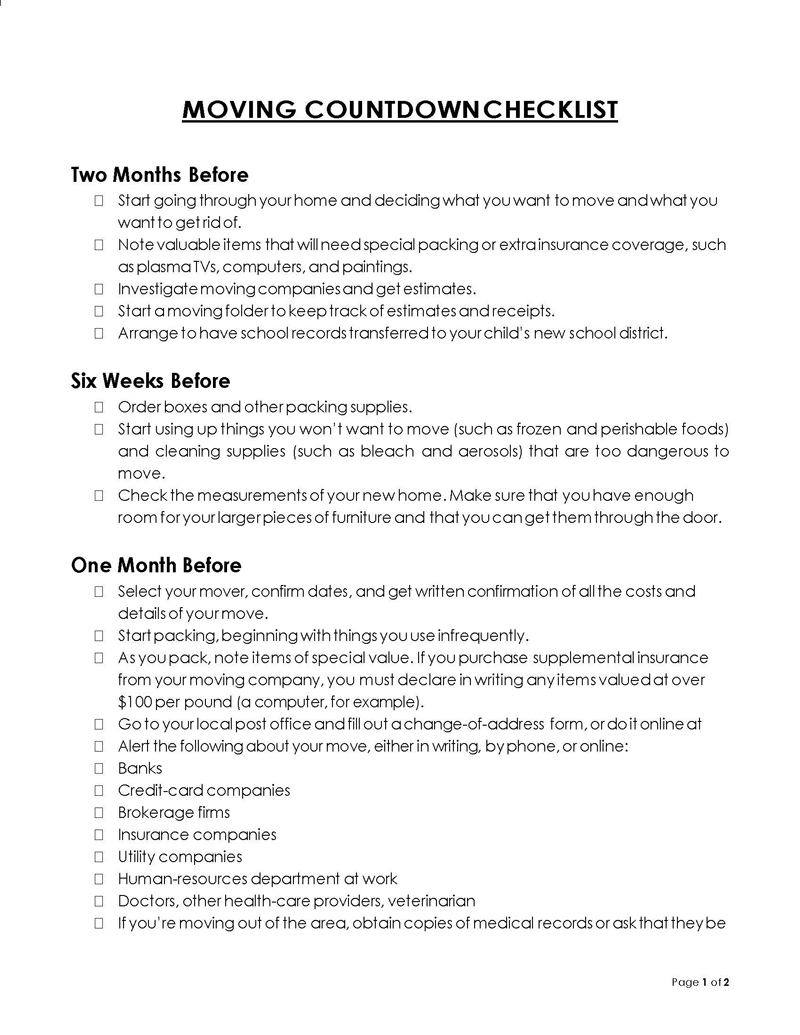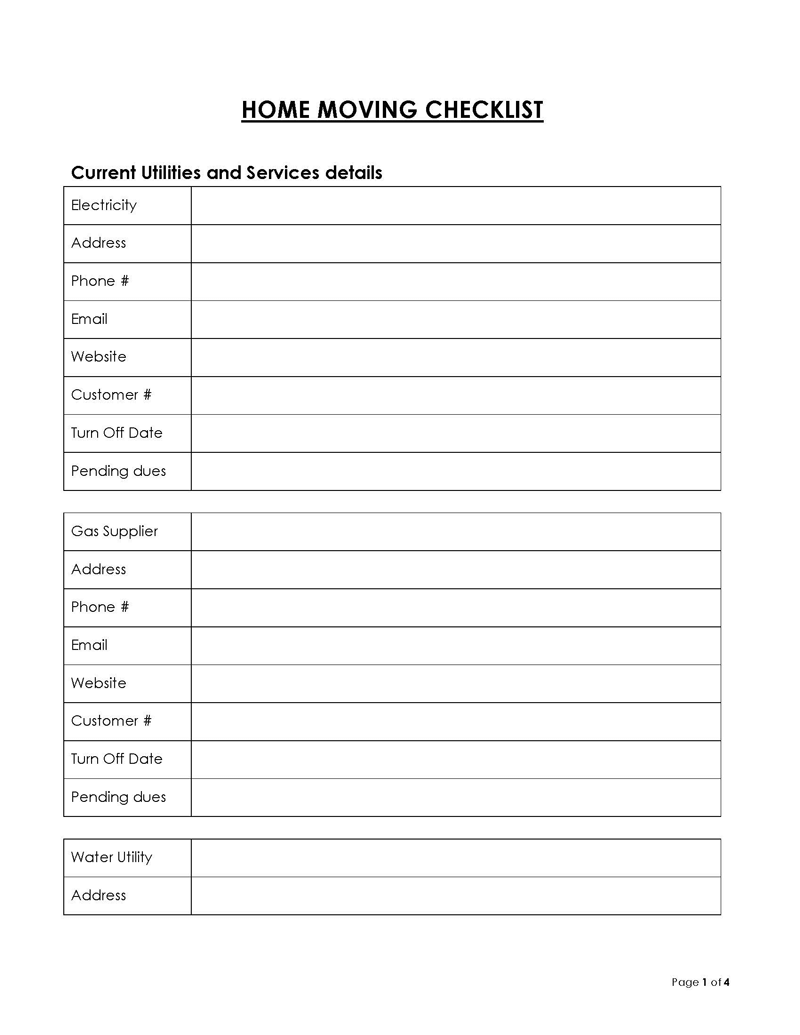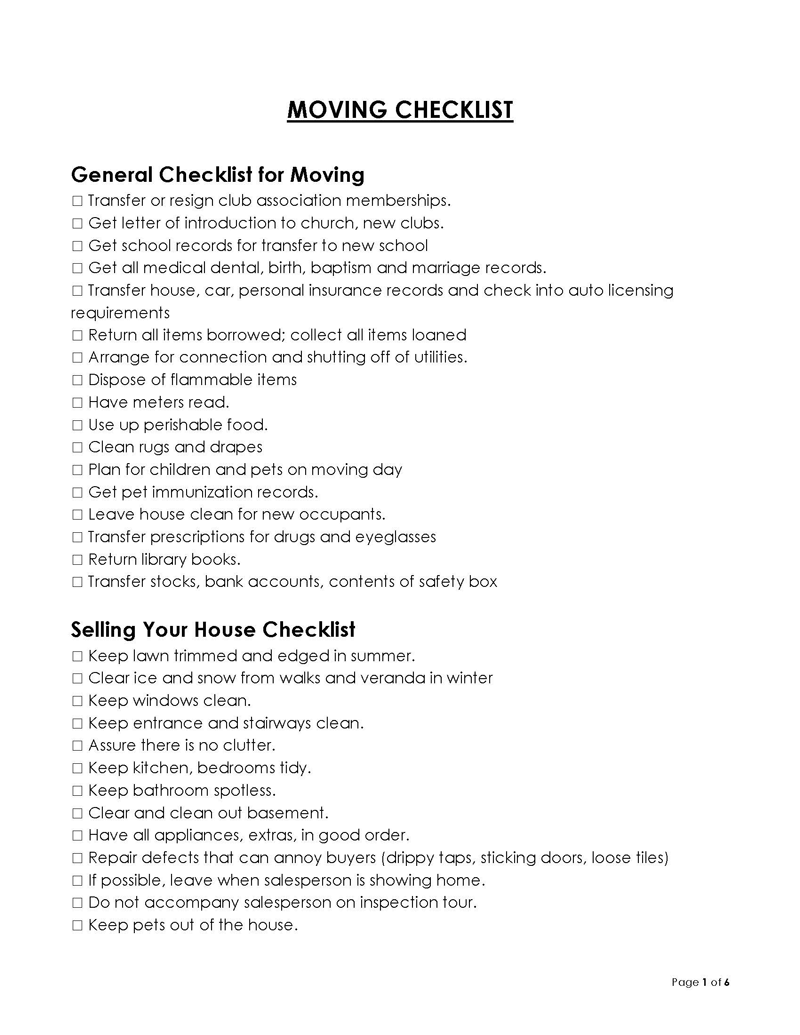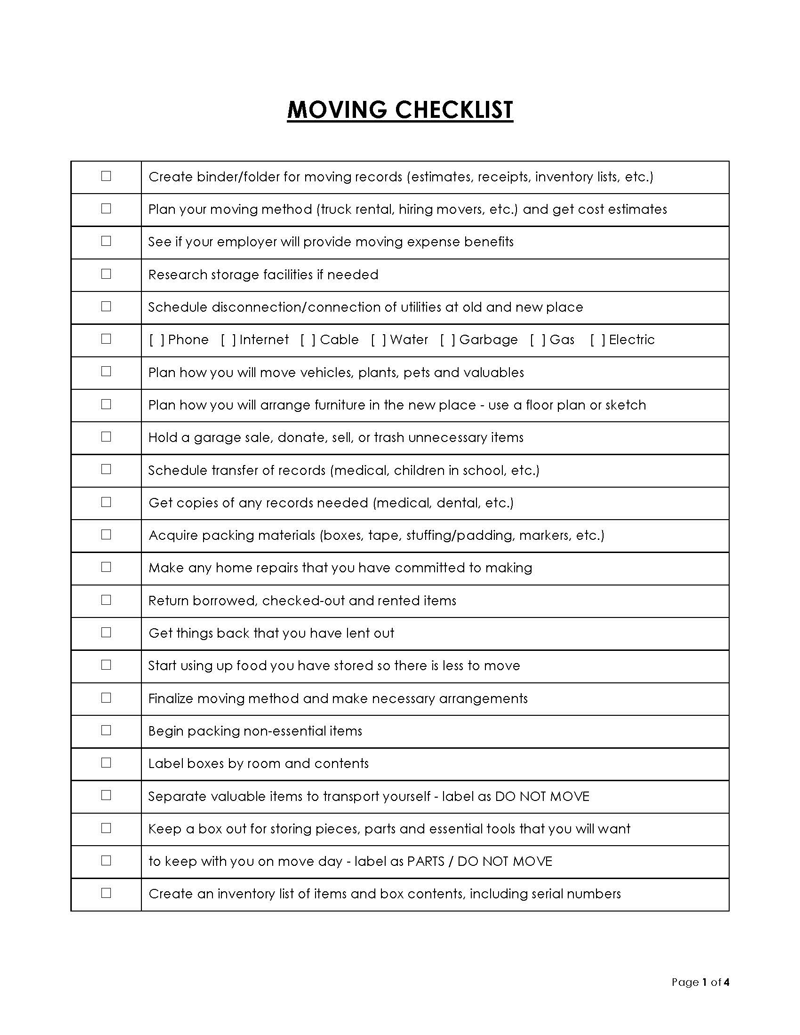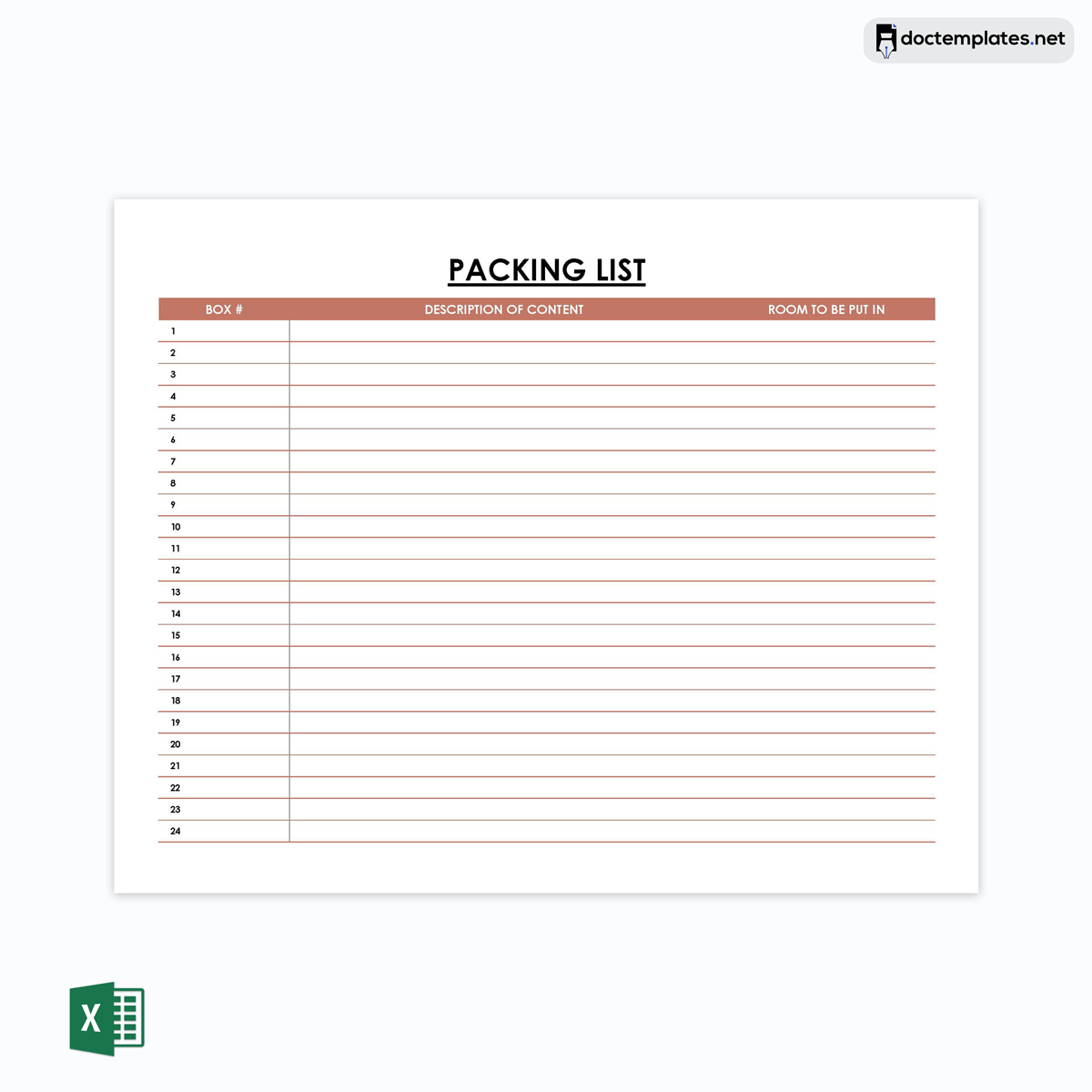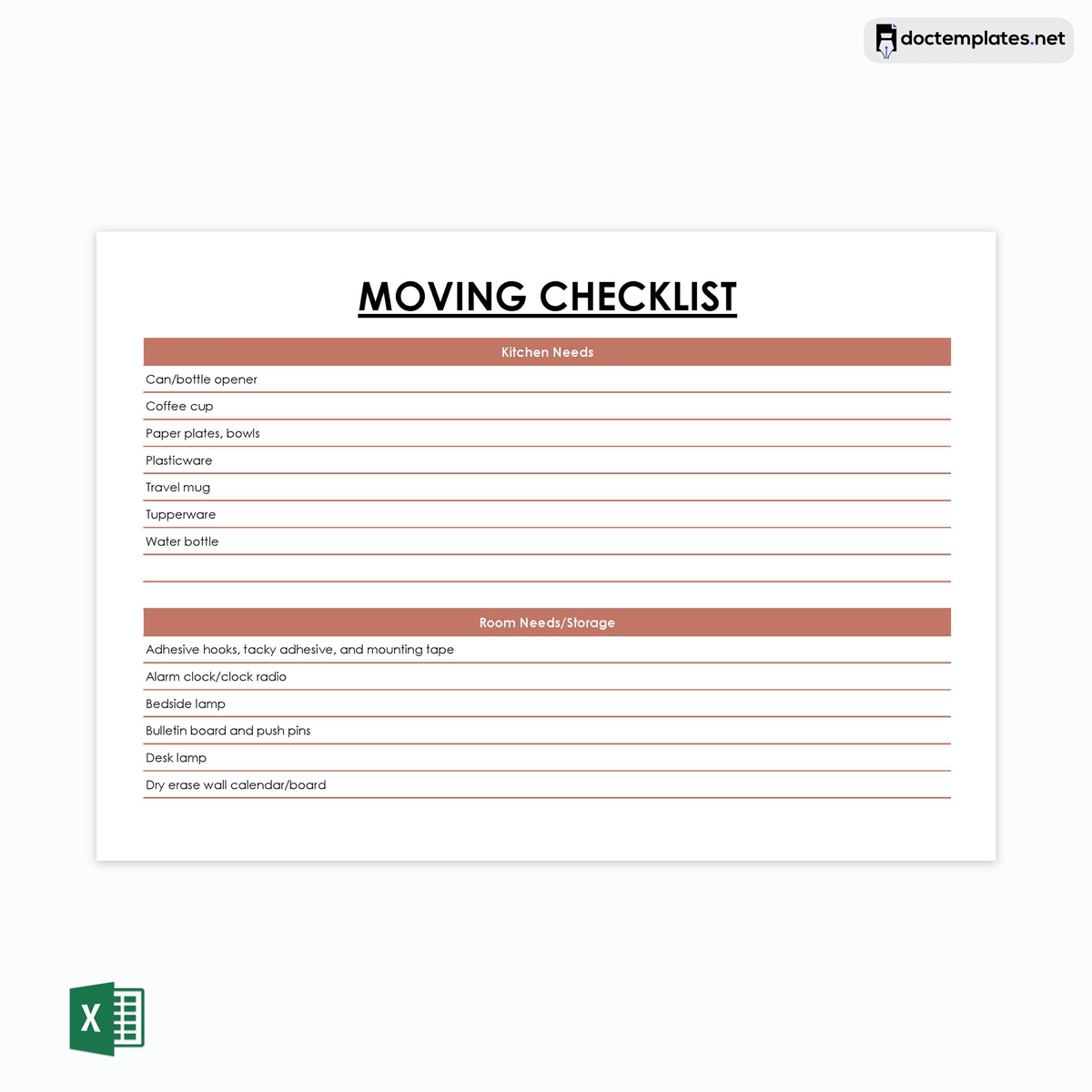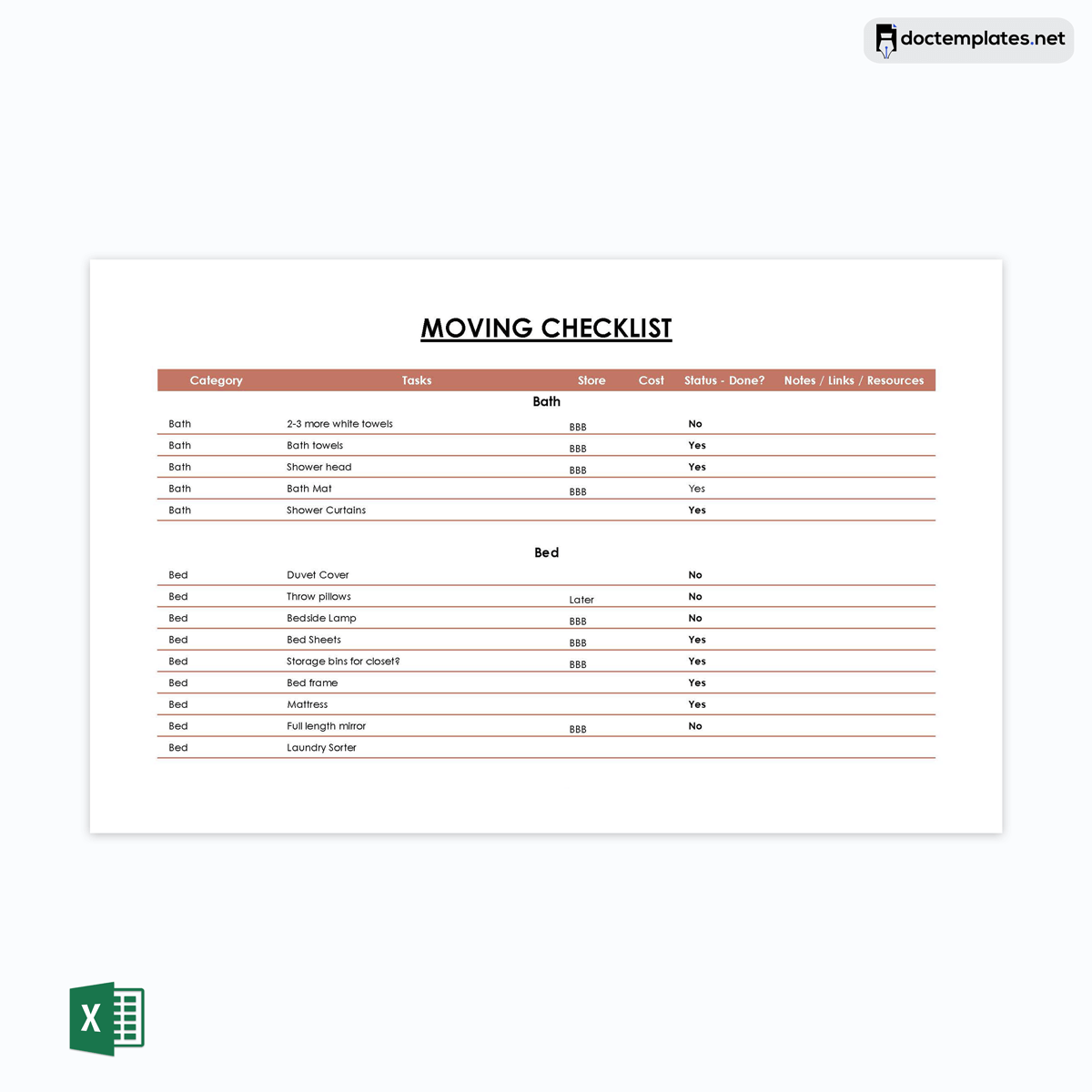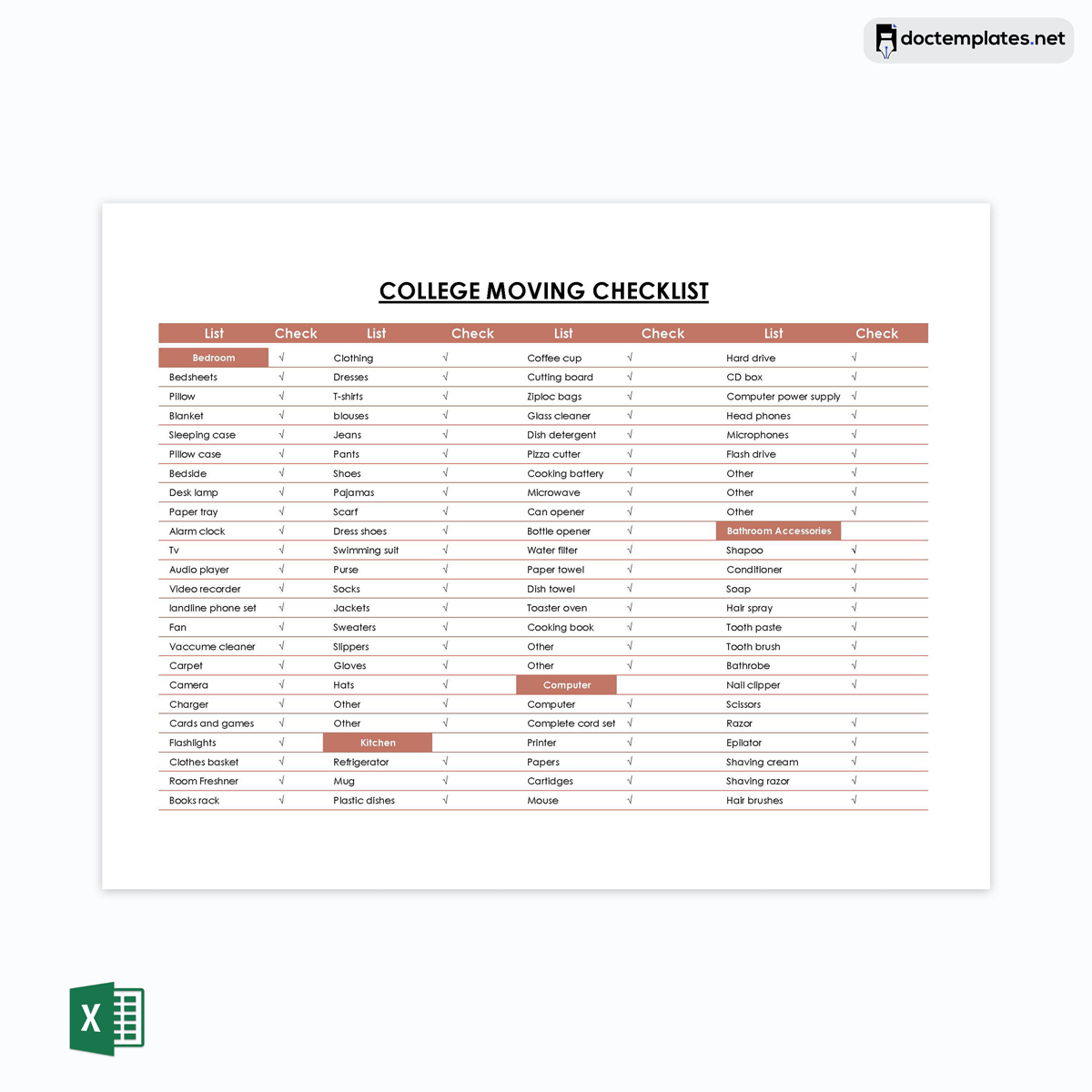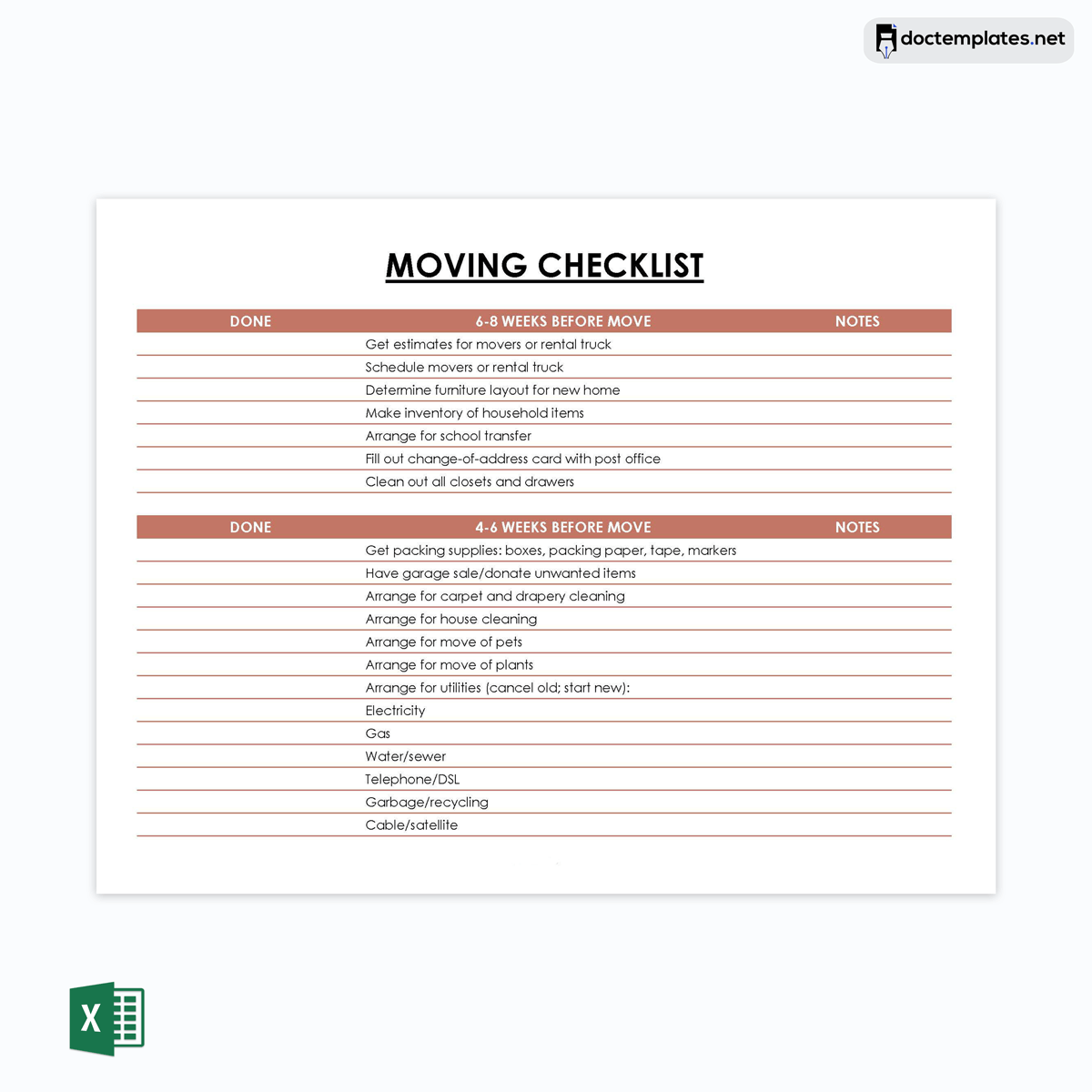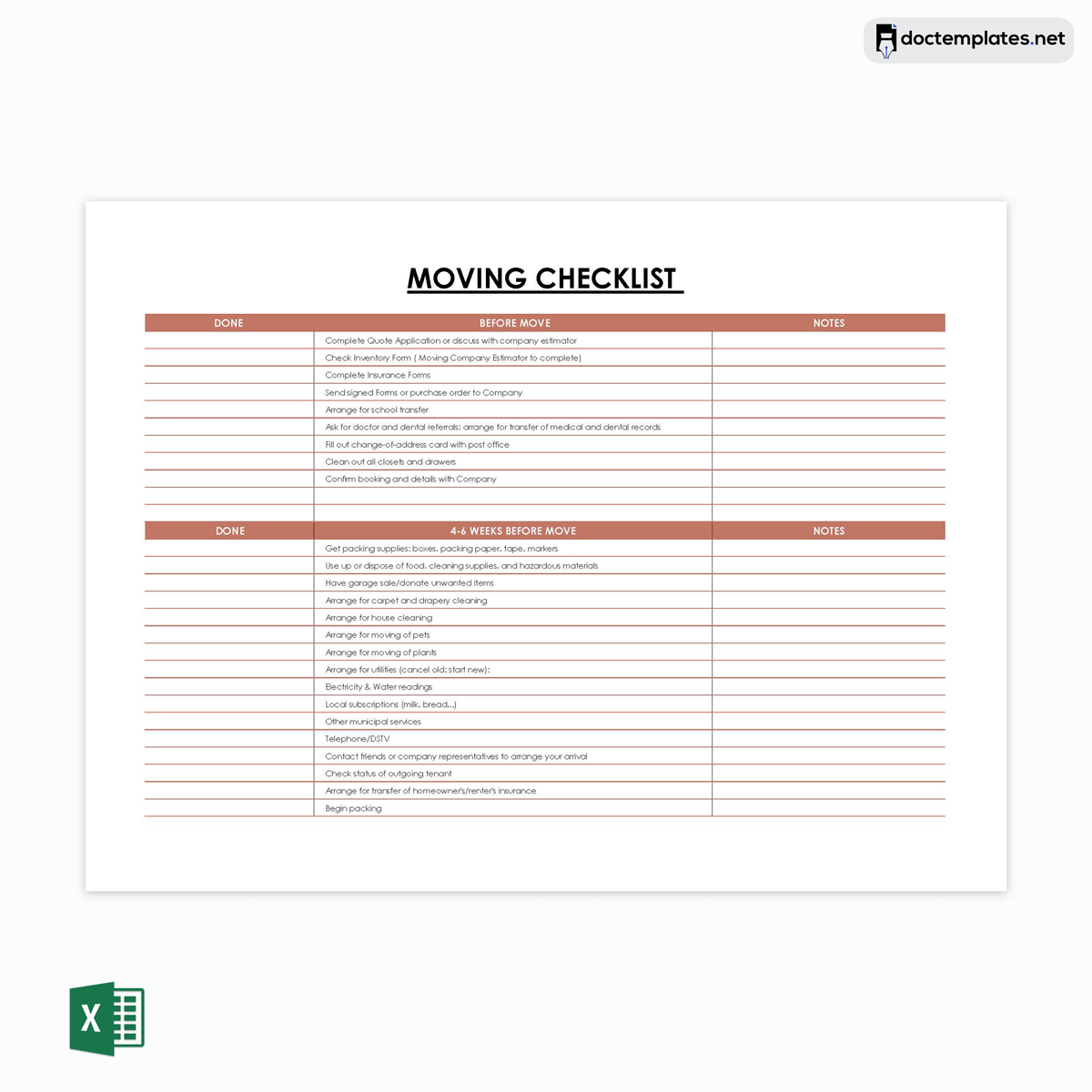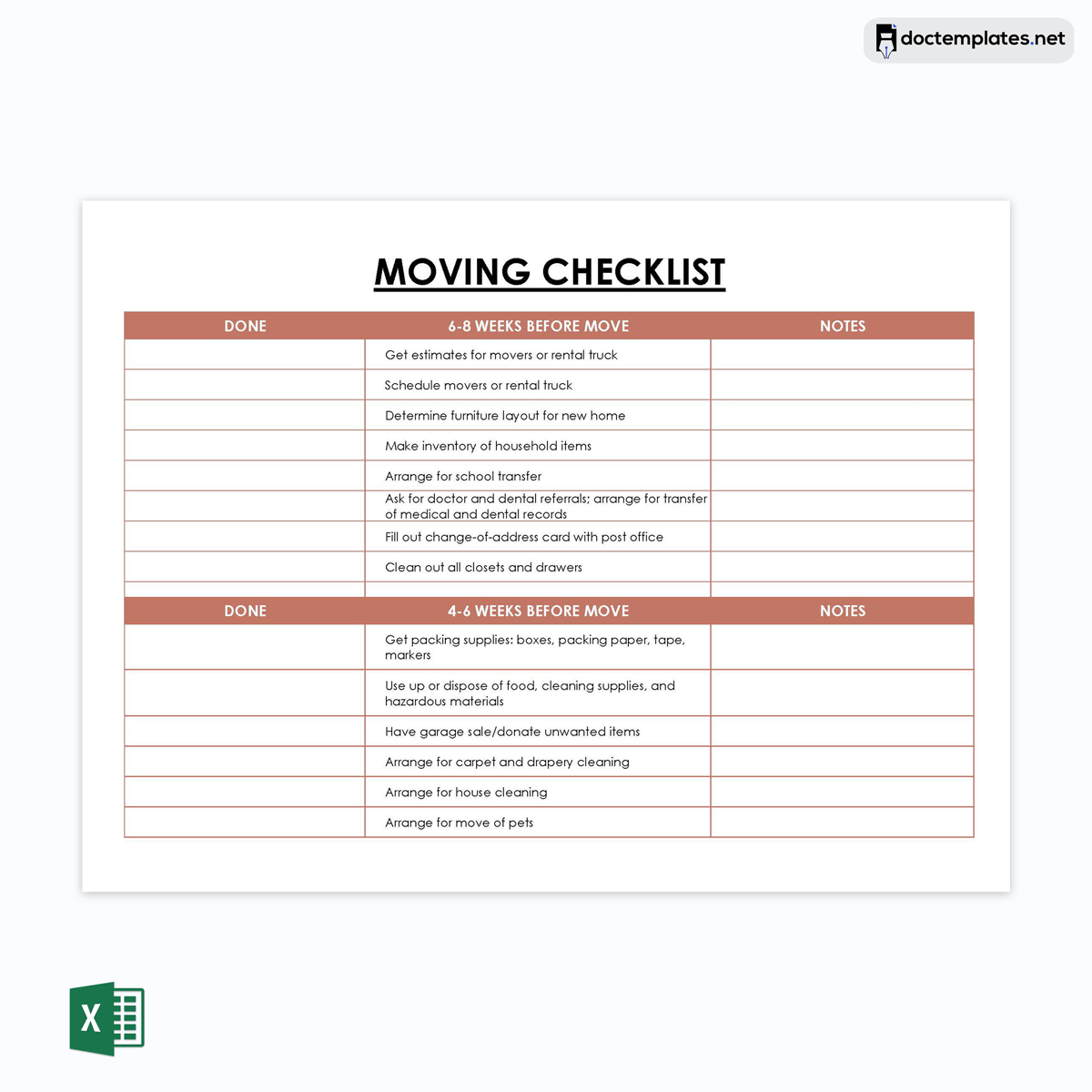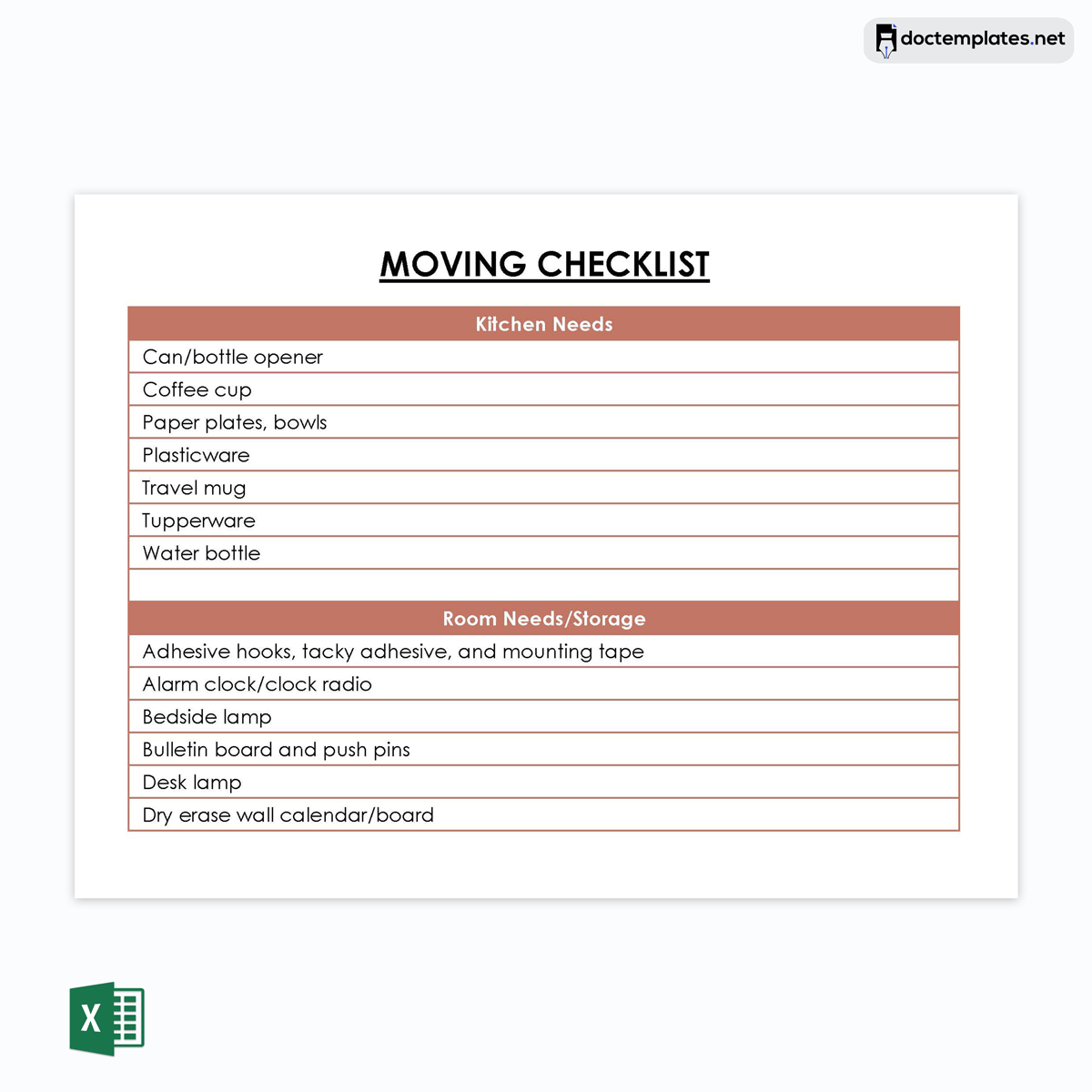If you are planning to move from your house, you are probably stressed about where to start when packing. The process of moving can be stressful because you are changing your home and living environment. At the time of your move, you must assess which of your belongings you must pack, give out or throw away. In addition, packing does not have to be a one-day event; you can plan your packing over a period to ease the stress of last-minute packing.
You can make moving easy by having a packing list. It is a document containing the details of items to be packed in a box. This list can help you plan what to pack and when. You can also use it to organize other aspects of moving like the types of boxes to use and labels to put on the boxes. The packing list is essential when moving because it helps you organize your items, making it easier to unpack when you get to your new home.
This article discusses how you can make and use a moving packing list. It gives pointers on the packing supplies you need and the possible packing methods. It also provides tips for packing to ensure your move goes well.
House Moving Packing List Templates
Because moving houses can be stressful, in addition to packing, you need to have a list of the items you will be packing. If you are going room-by-room, you may find taking inventory for each room difficult and time-consuming. Templates can help ease this process by providing an editable guide to items you need to pack. They are a handy tool as they can be edited to suit your needs without starting from scratch. We provide free downloadable packing list templates you can use.
Moving and Packing Supplies to Have
Before you start packing, you must buy the supplies you will use. You should have all your supplies in one place to make packing more accessible, as you can save time.
Some of the supplies you need include:
Boxes
It would be best to buy boxes of different sizes to accommodate household items. The most common boxes are made of cardboard. Ensure you buy enough to accommodate small items like books and large items like dishes.
Tapes
Tapes help to secure the boxes and the items during a move. Your tape should be solid and adhesive for it to be effective. The types of tape recommended for packing include shipping and storage tape. It is not advisable to use weaker tape like duct tape as it can quickly become loose.
Knife/scissor
Knives and scissors are helpful when cutting bubble wrap and packing. They can also make clean cuts on the edges of boxes. However, the knives and scissors should be sharp, so you should be careful when using them.
Marker
Markers are essential because they are used to label boxes and items. The best markers should be permanent and waterproof because the labels will remain intact even in bad weather.
Plastic bags
Plastic bags are required for small items like cutlery, jewellery, beads, and non-perishable food. They help you organize these items, which might easily be lost when moving. It is recommended to buy bags with bands that can be labelled.
Blanket
Blankets are a helpful item when packing fragile items like mirrors. They can be used as padding to prevent these fragile objects from being damaged. They can also be used with pads to protect furniture during transportation, which is especially important for delicate antique furniture.
Bubble wrap and newspaper
Bubble wrap is essential when packing both large and small items. Appliances like television sets can be wrapped in them. They can also be put on the bottom of boxes where utensils are packed to provide extra padding, reducing the utensils’ chances of breaking. Newspaper can be used to wrap cups and plates, which are likely to be scratched if stacked together.
Handcart
A handcart makes moving easier because it helps transport heavy items from the house into a moving truck. It is also helpful because it makes lifting more manageable, which might help in reducing injuries.
Planning Your Move to a New House
You can use various strategies to plan your move. The strategy you select depends on the number of items you can move and the time you have.
There are two methods of planning your move, as shown below:
By time
The moving process involves more activities besides putting household items in boxes. It also requires you to notify concerned parties, like the landlord and internet providers, of your intention to move. Once you set a moving date, you can request your friends, colleagues, and family to give you packing boxes. You can also start by giving away things you do not need two months before moving.
One month before the move, you should look for a moving company, report your change of address, and make a list of items you will pack. Then, two weeks before the move, you should apply to change your driving license, book a storage unit and organize childcare for the moving day.
Finally, one week before moving day, you should confirm your booking with the moving company, pack any remaining items, notify your landlord that you would like to inspect the property with them and prepare your furniture for the move.
Three days before moving day, you should notify your utility companies that you are moving and provide them with your new address. You should also check your food supply and throw away expired food. At this stage, you should pack your documents and valuables in separate packages and disconnect appliances.
You can also check whether your boxes are correctly labelled. Finally, on moving day, you should organize your items in the moving van and walk through your house to see if you have left anything behind. It is also recommended to check the meter readings and lock the doors and windows before you return your keys.
Room-by-room
Room-by-room packing involves packing items according to the rooms in your house. When using this method, you should label the boxes according to the rooms they will be placed in once you move. This method works best if you start with rooms you do not often use, like the garage and basement.
You can begin by making an inventory of the items in each room. Then, when packing, consider taking essential items like furnishings and equipment you will use at your new place. Further, you should take decorations and items of sentimental value that you will use to make your new place comfortable and homely.
How to Pack for a Move: A Complete Checklist
You can prepare your checklist according to the items in each room. In addition to a checklist, you should make an inventory for individual rooms and mark each item as you pack it; this way, you can be sure all the items have been packed.
The following are some of the rooms you should include in your checklist:
Home office items
The home office contains work documents, appliances like your desktop, and essential documents. Your appliances should be wrapped in bubble wrap, while documents should be kept in plastic bags before being boxed to ensure they are not destroyed should they come in contact with water. When packing electronics, you can color code the wires and take a picture of how your electronics were connected for easy assembly at your new place.
Garage and outdoor items
The garage often contains odd items that are often heavy. As such, this may be the most challenging room to pack. You can begin by decluttering it to remove items you can dispose of, like opened paint and oil cans. Next, tools and furniture should be cleaned and disassembled for easy packing.
Kitchen and pantry essentials
Kitchens also contain many small and odd-shaped items, some of which are delicate. For this reason, the kitchen and pantry should be packed carefully. Before packing food items, you should check their expiry date to avoid carrying spoilt food. It would be best to defrost the refrigerator at least forty-eight hours before moving day to prevent mildew and mold from growing.
If items must be frozen during the move, you can keep them in coolers. You should also pack appliances carefully by disconnecting their blades and wrapping their cords. You could also declutter the kitchen as you pack the items in boxes, that way, you can keep what you need and give away or sell what you do not.
When packing dishes, ensure you wrap them in bubble wrap to reduce their chances of breaking, and use boxes with dividers for items like fine China and glasses. You can protect your jars and seasoning tins by wrapping them in bubble wrap.
Packing a dining room
The best way to pack a dining room is to begin with the furniture and other bulky items. You can then pack breakable items like fine China, after which you can pack decorative items like lamps, cabinets, and rugs. Lamps, cabinets, and furniture can be wrapped in blankets and packed in individually labelled boxes. Rugs should be packed in vacuum-sealed plastic bags. If you have a chandelier, it is advisable to seek the help of professional movers to disconnect and pack it.
Living room items
The living room contains various items, from electronics to artwork and furniture. You can begin by removing unused things, such as old toys. Then you can move to breakable items like figurines; they should be wrapped in padding or bubble wrap. Next, if you have the artwork and other wall hangings, use bubble wrap and newspapers to secure them. Next, the furniture should be wrapped in blankets. Finally, all boxes should be secured with adhesive tape.
Bedrooms essentials
The bedroom contains the bulk of your items; therefore, it is vital to have enough boxes and moving supplies to keep you organized as you pack. It is recommended to begin with guest rooms as they have fewer items. You could categorize them as wardrobe items, accessories, and bedding. You can make unpacking easier by using wardrobe boxes which allow you to pack clothes in hangers.
Clothes can be packed in boxes which should be labelled. Bedding, pillows, and mattresses can be packed in plastic and trash bags, protecting them from dust and water as you move. Valuable items like jeweler and family heirlooms should always be with you. As such, you can pack them in a box as you move.
Child’s room items
You can prepare your child’s room for packing by beginning with items they do not often use, such as old toys and games. Then, to ensure consistency, pack items of similar nature in one box: for example, toys, games, bedding, clothes, and shoes.
Laundry room essentials
The laundry room contains a lot of liquids; you should buy enough plastic wrap for this room. You should throw away open and hazardous items like bleach which you will not need for your clean-up. Laundry furniture like ironing boards and drying racks should be wrapped in plastic bags. Electronics like the washer and dryer should be disconnected and packed in boxes. Ensure the cords are secured to the machines as they are packed.
Bathroom necessities
Bathrooms are easy to pack because you do not need to carry most items. Before packing, declutter the bathroom by identifying expired items and throwing them away. You can vacuum seal items like towels and bath cloths to reduce their bulk. Electronics and other appliances should be wrapped and packed in boxes. Fragile items like perfume bottles should be placed in smaller boxes and secured tightly; these boxes should also be labelled as fragile.
9 Packing Tips for a Smooth Move
Now that you know what method of packing works for you and what items you will be packing, you can improve your packing experience by using the following tips:
Start with items you do not need
It would be best to begin packing sometime before the moving day. Because of this, items you use daily and consistently should be the last to be packed. So instead, begin by packing items you rarely use, like old clothes.
Pack essentials separately
Essential items like first aid kits and toiletries should be packed in easy-to-access boxes. They could also be packed in separate boxes from other items as they may be needed urgently.
Pack similar items together
You could categorize items by room or use and label them appropriately to make it easy to identify them when unpacking. For example, if you have decided to use the room-by-room method, you could label the items by room.
Label each box by its content and room
One of the goals of organized packing is to make it easy to unpack. You can achieve this by labelling each box by its contents and in what room they should be placed. The most recommended way of labelling the boxes is by pasting the labels on at least two sides of the box.
Use the right size boxes
When buying supplies, ensure you buy sufficient boxes for packing to avoid overcrowding items in boxes. In addition, you should ensure the boxes are the right size for the items; for example, lighter items like towels can be packed in more giant boxes.
Use color coding
Color coding is an additional labelling technique that will make it easier to identify the boxes. For example, you could select a color for each room, instructing the movers to place particular boxes in their respective rooms.
Give yourself plenty of time
Because packing can be time-consuming, you should create time to pack a few items in your daily schedule. This daily routine can ease the stress of packing everything at once. You can make this daily routine more effective by creating a daily schedule for the items you pack.
Do not leave empty spaces in the boxes
It is crucial to avoid leaving empty spaces in boxes as the items may break during transit. Instead, you can fill empty spaces with packing paper, blankets, or even clothes to ensure the items inside remain stable.
Pack larger items first
More oversized items like furniture and bigger appliances should be packed first to give space to smaller items. In addition, packing smaller items closer to the truck’s door makes loading and unloading the items easier on moving days.
Frequently Asked Questions
Who do I need to notify of a change of address?
When moving houses, you also change the service providers, utilities, and addresses. You should therefore notify the following:
-The driving and vehicle licensing agency
-Your employer
-Utility providers
-Landlord
-Your bank
-Electoral roll
-Local tax council
How do you forward your address when moving?
You can forward your address by visiting USPS.com or your appropriate mailing service website when changing your address.
How do you organize moving house?
You can organize your moving house by creating or downloading a checklist to guide you through preparing for packing and moving.
What to do after moving into a new house?
Before you unpack, you should walk through the house and take photographs to see the house’s condition as evidence. Next, planning an appropriate layout for your furniture would be best. Finally, you can unpack after assessing the house and ensuring the utilities are operational.
How long does it take to pack a large van?
The time it takes to pack depends on your house’s size and the belongings. For example, a one-bedroom house may take four to five hours, a two-bedroom house-six to eight hours, a three-bedroom house- about nine hours, and a four-bedroom house- a day or more.
How do you pack dishes for a move?
When packing dishes for a move, begin with the heavier items first and stack the dishes vertically. Wrap each dish individually, especially plates, cups, and bowls, and ensure no extra space in each box. The boxes containing dishes should be labelled “fragile” and handled carefully to avoid breaking them.
